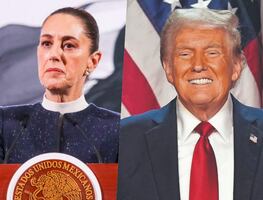Más Información

Sheinbaum responde a Trump sobre declarar a cárteles como organizaciones terroristas; rechaza injerencia extranjera

PAN exige renuncia de Rubén Rocha Moya; Claudia Sheinbaum sigue protegiéndolo en “complicidad vergonzante”

No cesaremos ni nos rendiremos en nuestro llamado a la paz y justicia: Iglesia; pide ser persistentes en exigencia

Con reformas laborales, expertos ven estrategia de Morena; van a fortalecer su número de simpatizantes
The Palace of Fine Arts Museum is presenting since last Friday, June 9, to September 10 the first exhibition that delves into the relations and influences between two of the great painters of the 20th century, Pablo Picasso and Diego Rivera; which establishes the presence of the art of ancient cultures in their modern works, and which accounts for the influences between each other.
Over 140 works from museums and international collections are part of this exhibition that presents the personal and artistic dialogue of the two painters between 1900 and 1940.
“Pablo Picasso y Diego Rivera: Conversaciones a través del
tiempo
” (Pablo Picasso and Diego Rivera: Conversations over time) comes to Mexico after being presented in 2016 at the Los Angeles County Museum of Art (LACMA). It includes 45 Picasso works and 54 pieces of Diego Rivera, among oils, drawing and graphics, which are exhibited together with pieces of ancient art - Greco-Roman and Prehispanic - that were referential to them, developed through their works, model to some of their pieces and which gave rise to forms, techniques and artistic solutions.
With curatorship of Juan Coronel Rivera, Diana Magaloni and Michael Govan, the exhibition in the Palace of Fine Arts is distributed in nuclei: The Academies, The Cubist Years, America and Europe, and finally, a nucleus divided into two sub-themes: Diego Rivera and Pablo Picasso.
Self-portraits of the artists, both from 1906, receive the visitor and offer a first contrast; Picasso, seven years older, presented himself as a painter who had broken with the academy's molds; The piece is displayed next to a sculpture of Osuna, which comes from the Archaeological Museum of Madrid, with lines and forms that preserve the work of the painter. Rivera, on the other hand, is portrayed in front of some fabrics hiding their content; according to the curators, at that moment he was still immersed in the academic environment; it wouldn't be until the 1920s when his work began to express the strength of Prehispanic cultures.
al






